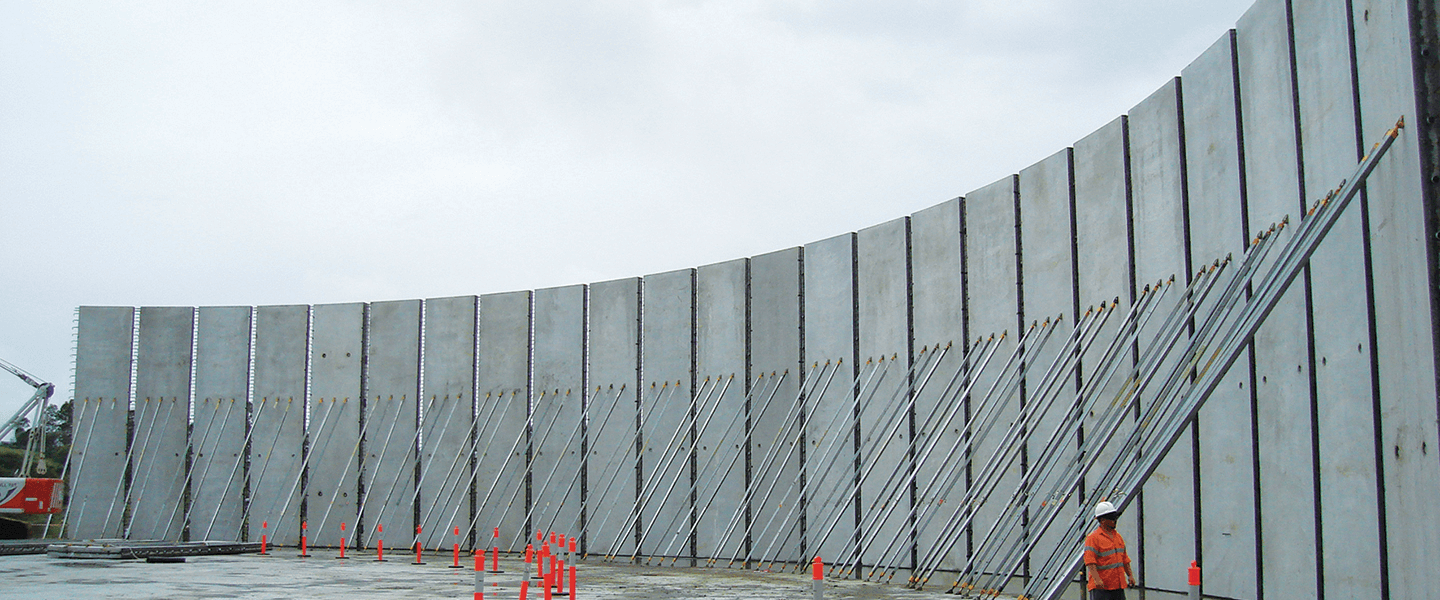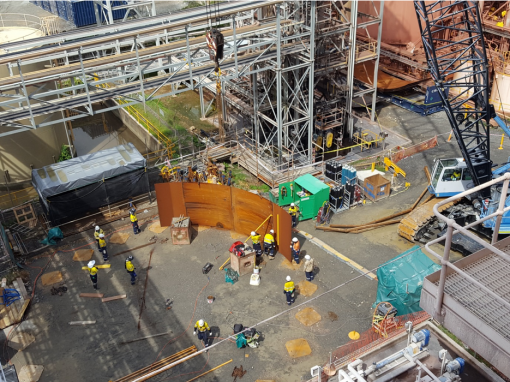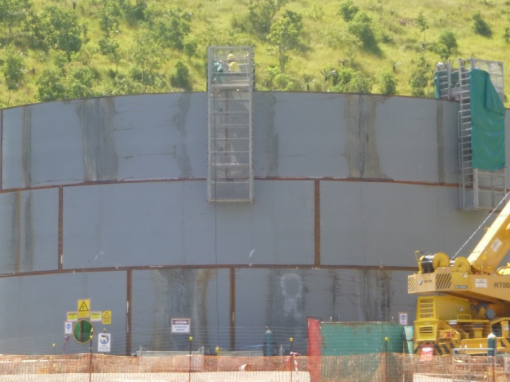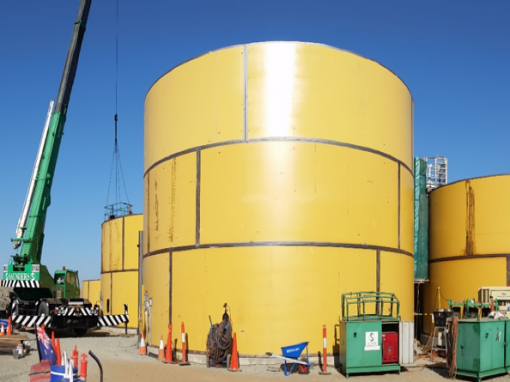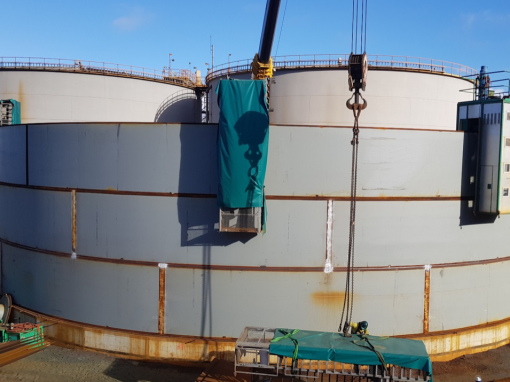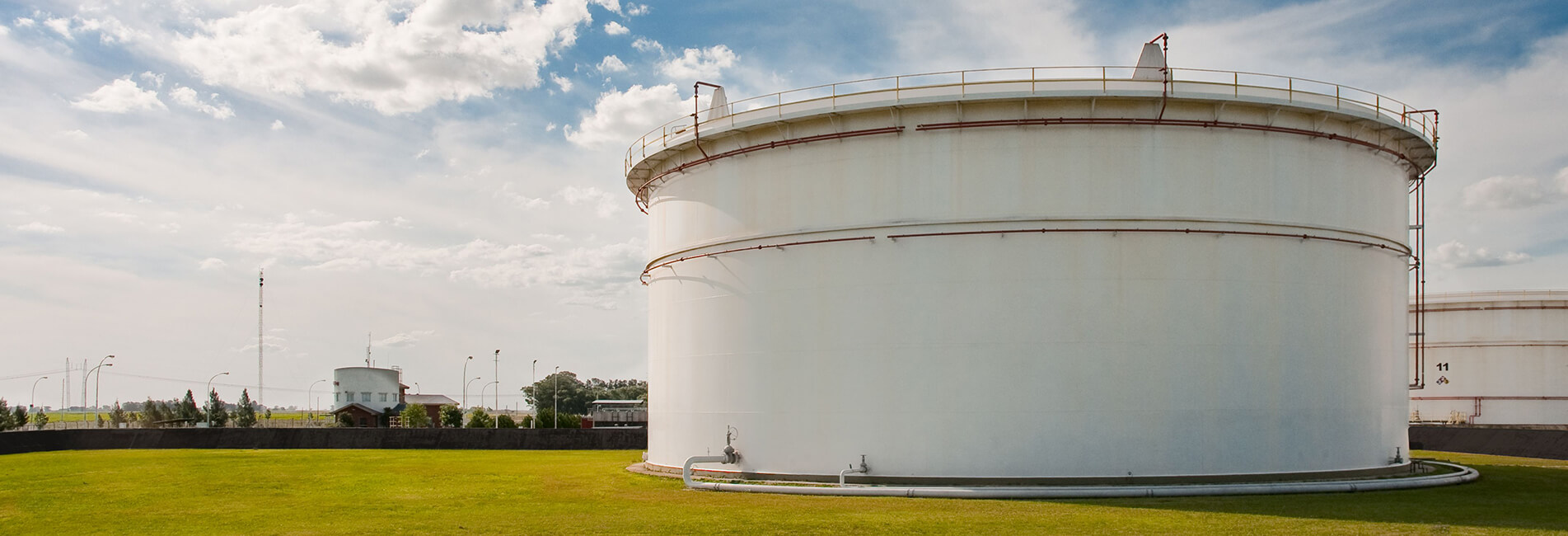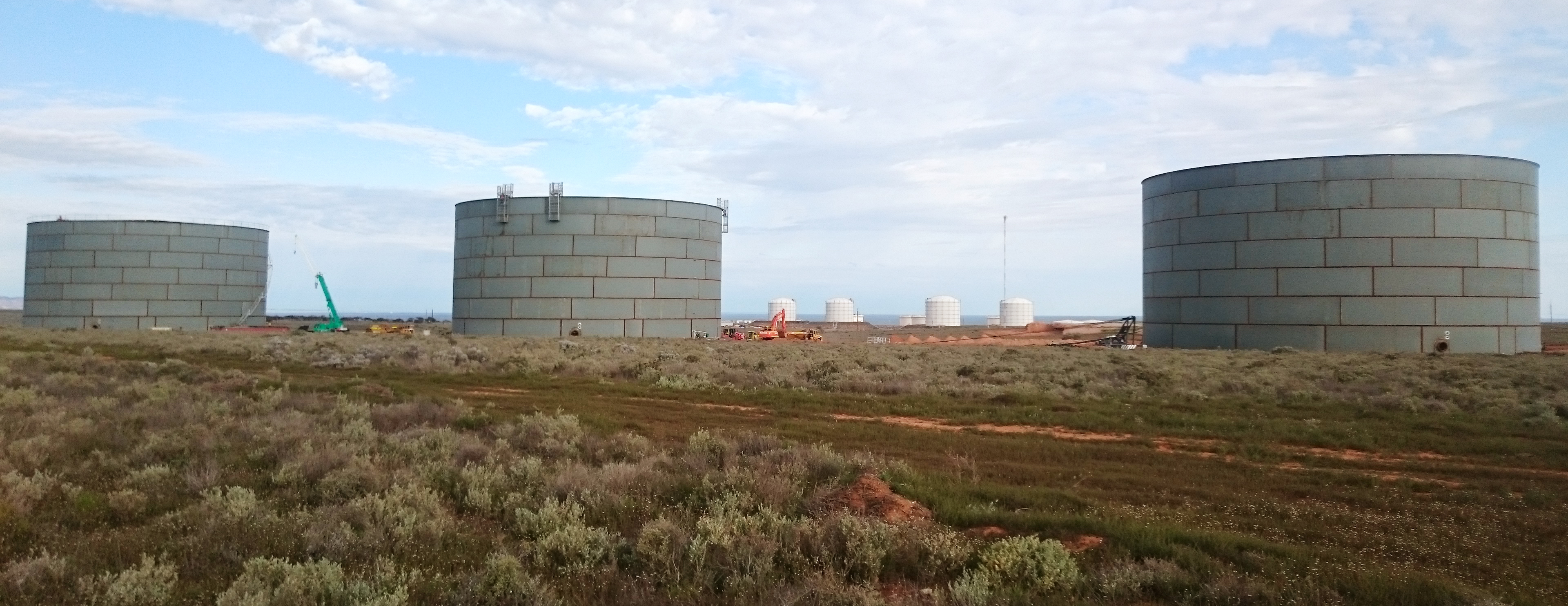Tank construction and maintenance was the origin of the Saunders business and remains a major part of our business today. Saunders has the expertise, methods, specialist equipment and experienced personnel to safely and efficiently undertake the full range of tank services including new builds, relocations, major repairs and rehabilitation and periodic maintenance.
Saunders has a strong track record in delivery of tank services at most of the Australian refineries and major terminals, including BP Bulwer, BP Kwinana, Shell Clyde, Caltex Kurnell, Caltex Lytton and Mobil Altona. As a contract requirement, our clients have measured our performance on a regular basis so as to set Key Performance Indicators, including safety, quality, scheduling, cost and innovation. Our consistent performance has led to the on-going renewal of many of these contracts.
Off Foundation Construction
The Off Foundation Construction method is typically used for smaller diameter tanks where the tank can be built on a temporary foundation but in close proximity to its final location. On completion of the tank, it is then lifted into position using heavy lift cranes. This method offers significant schedule savings as tank construction can be run in parallel with foundation construction.
If there is significant pressure on the project schedule, we can offer another option with smaller diameter tanks. This method involves the construction of the roof and all roof fittings in parallel with the strake erection. The roof would be constructed on a temporary footing and lifted as a completed unit onto the shell when completed.
Saunders will complete a site inspection anywhere in the county and provide advice on the safest and most suitable approach to delivering your tank project.
Tank Jacking (Top Down)
Saunders has the capabilities for tank construction using the top down method. This method involves the use of a series of jacks to jack the tank upwards while installing a strake underneath the previously jacked strake. This approach to tank construction involves the following sequence in construction methodology:
Step 1 – Lay and weld the floor
Step 2 – Install the final strake of the tank
Step 3 – Install the roof on the final strake
Step 4 – Jack final strake and roof upwards three meters
Step 5 – Install a new strake under the jacked strake and weld out
Step 4 and 5 are repeated until the tank is shell high. The bottom strake is then welded to the annular when the tank is complete.
With the Top Down methodology, typically the construction schedule will be extended when compared to the conventional bottom up approach to tank construction.
However, this approach offers the following advantages:
• Reduced working at height man-hours
• Reduced site foot print for the construction area
Conventional Construction (Bottom Up)
Our preferred method of tank construction is the bottom up method where tanks are assembled one strake on top of another, finishing with the roof installation. This methodology enables us to offer a shorter construction schedule compared to the top down method.
The advantages to a Bottom Up approach include:
• Ability to use automatic welding processes. Specialised equipment such as the double-sided automatic girth welder for horizontal seams, or the electrogas welder for vertical seams,
can be utilised
• There are significant opportunities for schedule gains when using an electrogas automatic welder for vertical seam welding because an automatic welder can complete a three metre, 20mm thick vertical weld seam in approximately 10% of the time it would take to weld the same seam using a manual weld process
• Similarly, with an Automatic Girth Welder, a tank horizontal weld seam can be completed 60% quicker using the automated submerged arc process as compared to traditional manual welding
• The use of automated equipment reduces the number of personnel required at the work site – increasing productivity, improving safety and quality and reducing cost
• It enables us to use Saunders’ proprietary scaffold system, designed and built in compliance with all relevant Australian standards. This system ensures the tank’s structural integrity during construction, while providing safe access to the work station for all personnel
• All working platforms are designed and built to ensure the prevention of objects falling from height; eliminating risk from falling objects
Featured Projects

